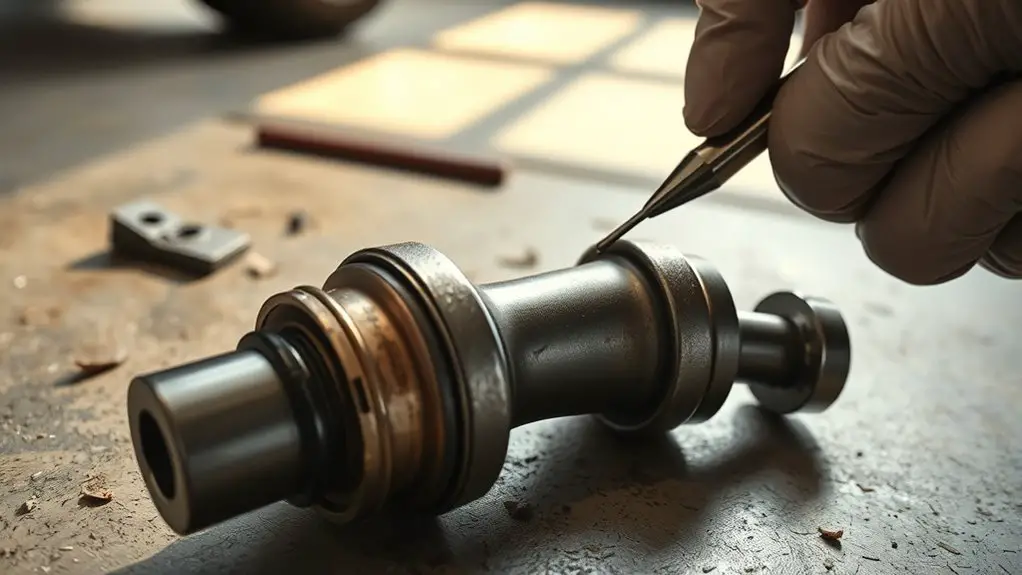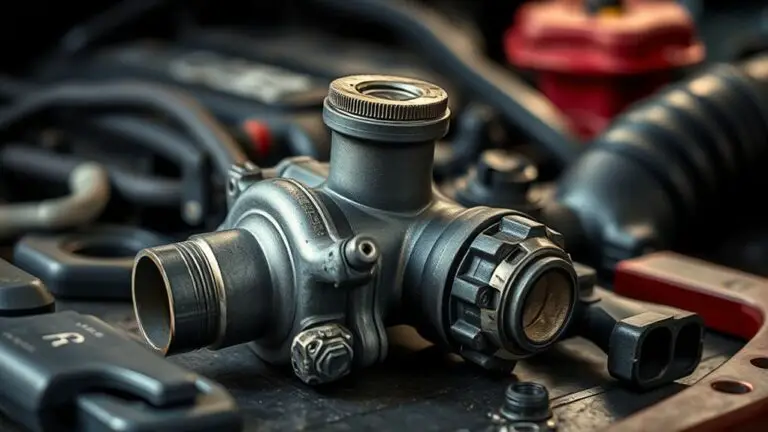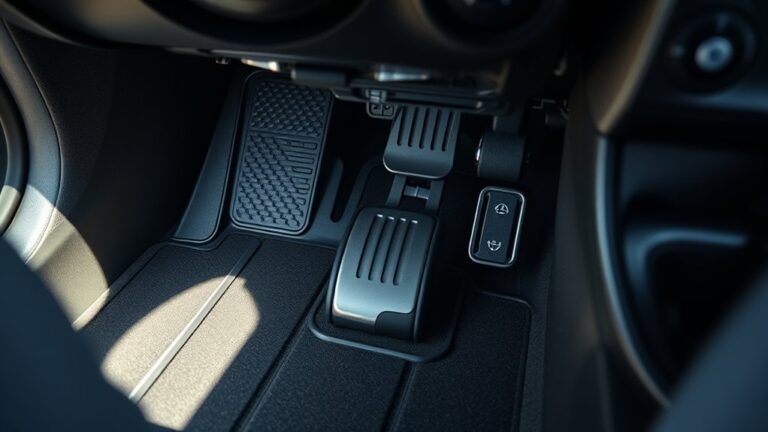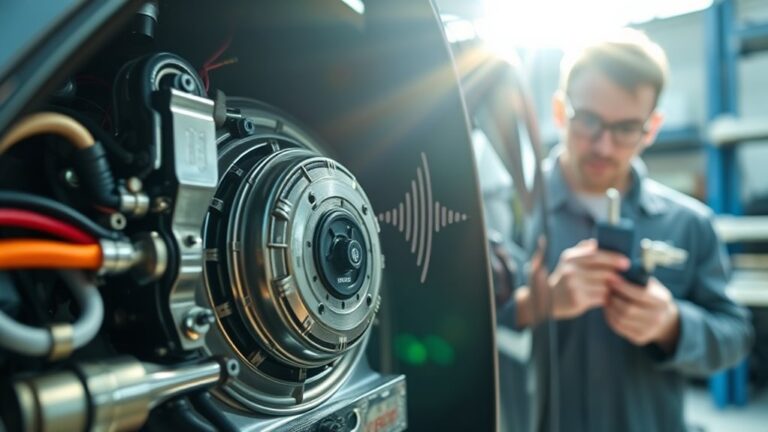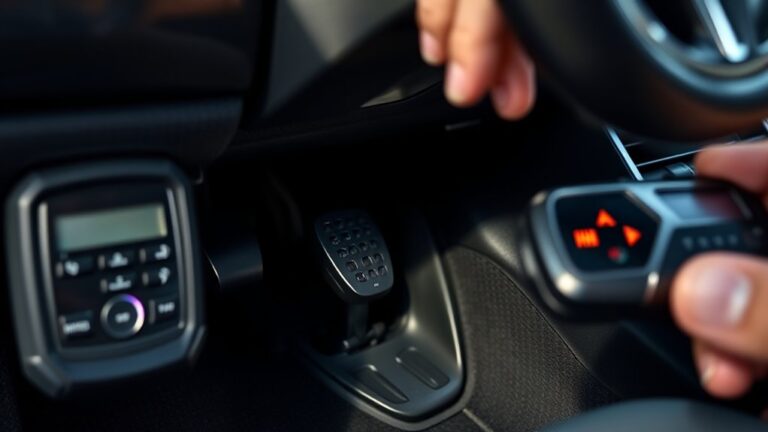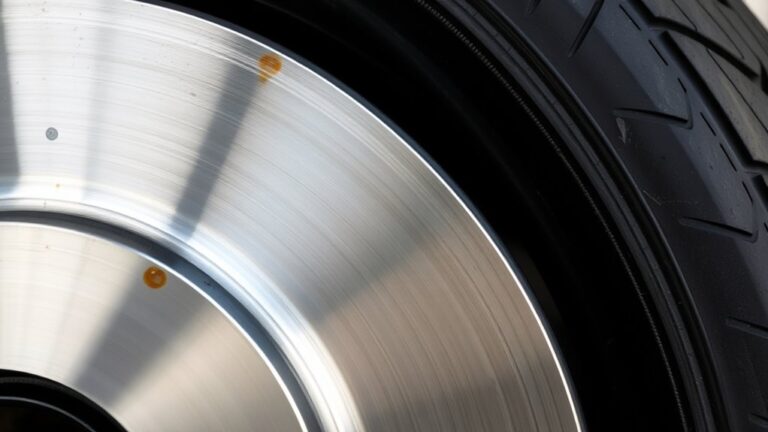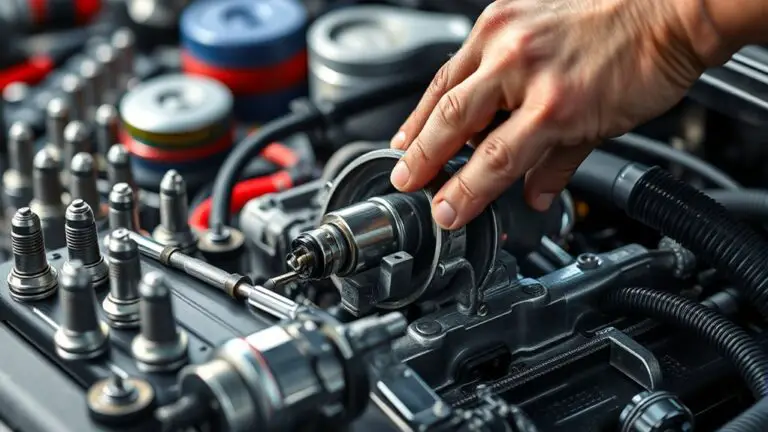Top Causes of CV Joint Clicking and Quick Diagnosis Tips
If you’re hearing clicking sounds while turning, it’s likely due to worn or damaged CV joints, often caused by lack of lubrication or debris infiltration from torn boots. To quickly diagnose CV joint issues, elevate your vehicle and inspect the boots for tears or leaks. Pay attention to any abnormal noises or vibrations during test drives. Early detection can save you costly repairs, and you’ll find more detailed information on maintaining your vehicle’s performance and reliability.
Common Causes of CV Joint Clicking
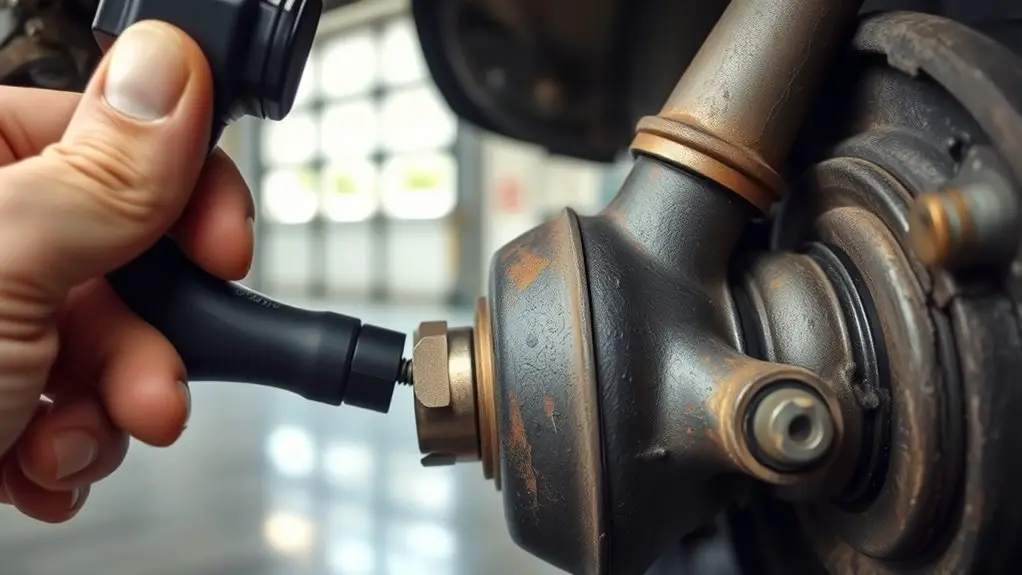
When you hear a clicking noise while turning, it’s often a sign that something’s wrong with your CV joint. This vital component connects your vehicle’s transmission to the wheels, enabling smooth power transfer during turns. A common cause of clicking is a worn or damaged outer CV joint, which may occur due to lack of lubrication or debris infiltration. If the protective boot tears, dirt and moisture can enter, accelerating wear. Another cause could be a failing inner CV joint, which typically manifests as a clicking noise during sharper turns. Additionally, improper installation or misalignment can stress the joint, leading to premature failure. If you notice this clicking noise, it’s important to address the issue promptly. Ignoring it can lead to more severe drivetrain problems and compromise your vehicle’s performance. Understanding these causes helps you maintain your freedom on the road with a reliable vehicle.
Quick Diagnosis Tips for CV Joint Issues
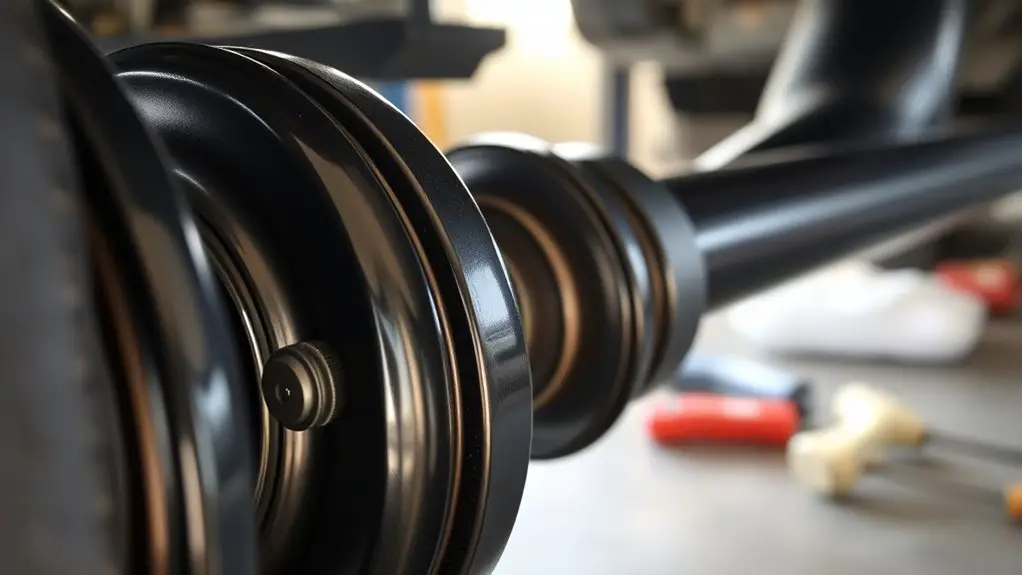
How can you quickly diagnose CV joint issues before they worsen? Start by conducting a thorough symptom identification. Listen for clicking or popping sounds when turning the steering wheel, especially at low speeds. You might also notice vibrations or unusual handling.
Next, utilize basic diagnostic tools. A jack and jack stands can help you lift the vehicle for a closer inspection. Check the CV boots for tears or leaks, as these are tell-tale signs of impending failure.
If you have access to a diagnostic scanner, use it to check for any error codes related to the drivetrain.
Lastly, take a test drive on a smooth surface; pay attention to how the vehicle responds. Any deviations from normal operation could signal CV joint issues. By addressing these symptoms early, you can prevent further damage and costly repairs.
Frequently Asked Questions
What Are CV Joints, and Why Are They Important?
Did you know that over 70% of modern vehicles use CV joints for smooth driving? CV joints, or constant velocity joints, are critical components in your vehicle’s drivetrain, allowing power to transfer from the engine to the wheels while accommodating suspension movement. Made from durable materials like steel and rubber, CV joints function to maintain consistent torque and speed, ensuring your ride’s stability and performance. Keeping them in good shape is essential for vehicle safety.
How Can I Prevent CV Joint Damage?
To prevent CV joint damage, you should focus on preventative maintenance and conduct regular inspections. Make it a habit to check for signs of wear and tear, such as leaks or unusual noises. Keeping your vehicle’s suspension and steering components in good shape will also help. Additionally, guarantee your vehicle’s alignment is correct, as improper alignment can lead to excessive stress on the joints, ultimately prolonging their lifespan and enhancing your driving experience.
What Are the Signs of a Failing CV Joint?
You’ll notice several CV joint symptoms if it’s failing. Common signs include clicking noises when you turn or accelerate, which can indicate wear. You might also experience vibrations in the steering wheel or during acceleration. If you feel any unusual resistance while steering or if the vehicle pulls to one side, it’s a warning sign. Ignoring these symptoms could lead to further damage, so it’s essential to address them promptly.
Can I Drive With a Clicking CV Joint?
Driving with a clicking CV joint is like sailing with a hole in your boat; it might work for a while, but it’s risky. That clicking noise indicates potential damage, which can compromise your driving safety. If left unchecked, it could lead to more severe issues, including loss of control. It’s best to have your vehicle inspected by a professional to guarantee your freedom on the road isn’t jeopardized by a failing component.
How Much Does It Cost to Replace a CV Joint?
Replacing a CV joint usually costs between $300 to $800, depending on your vehicle and the extent of the damage. For a cost comparison, labor can account for a significant portion, so consider repair options like rebuilding the joint or opting for aftermarket parts. Always get multiple quotes to guarantee you’re getting the best deal. Remember, investing in proper repairs now can save you from future expenses and secure your freedom on the road.

